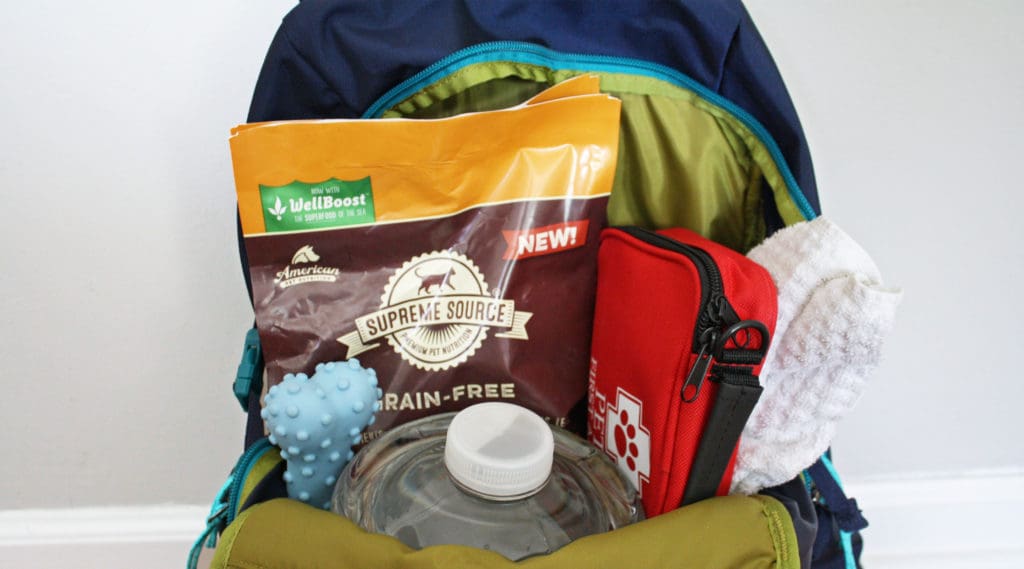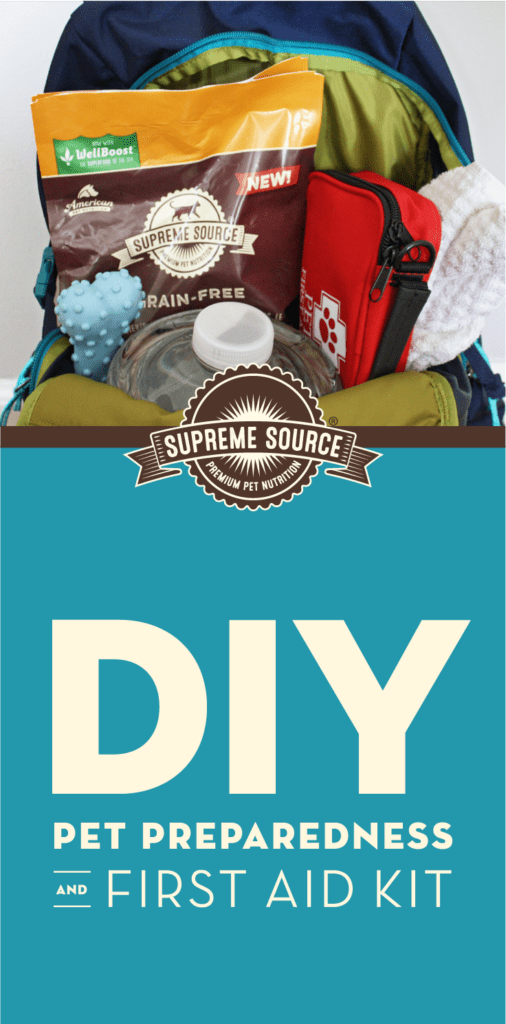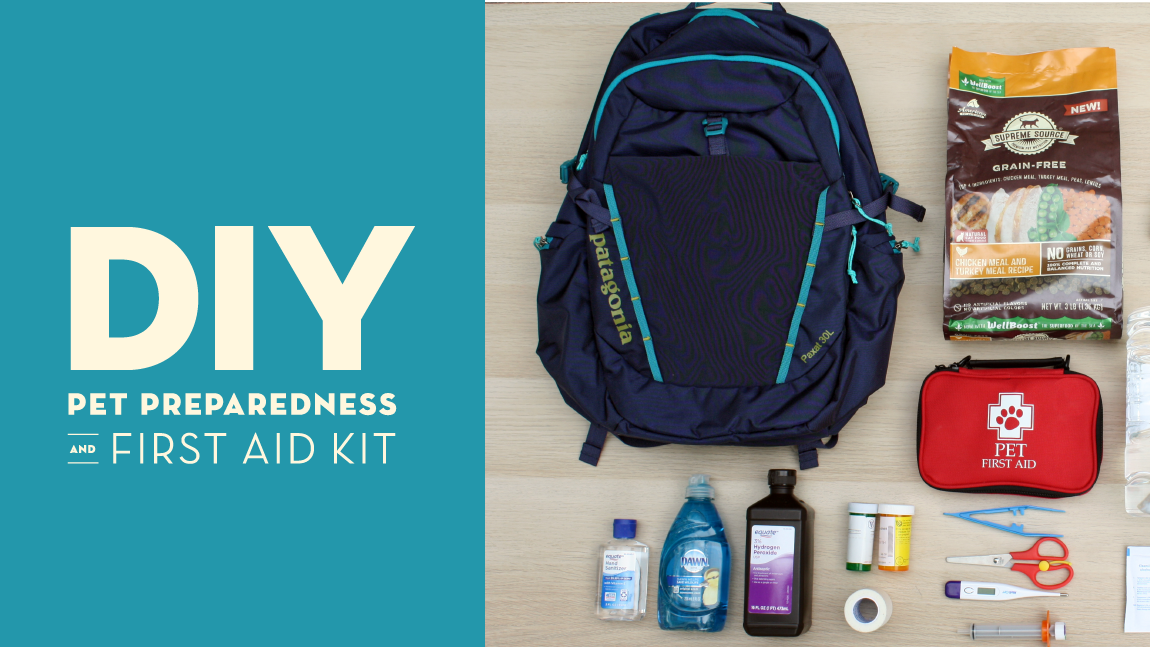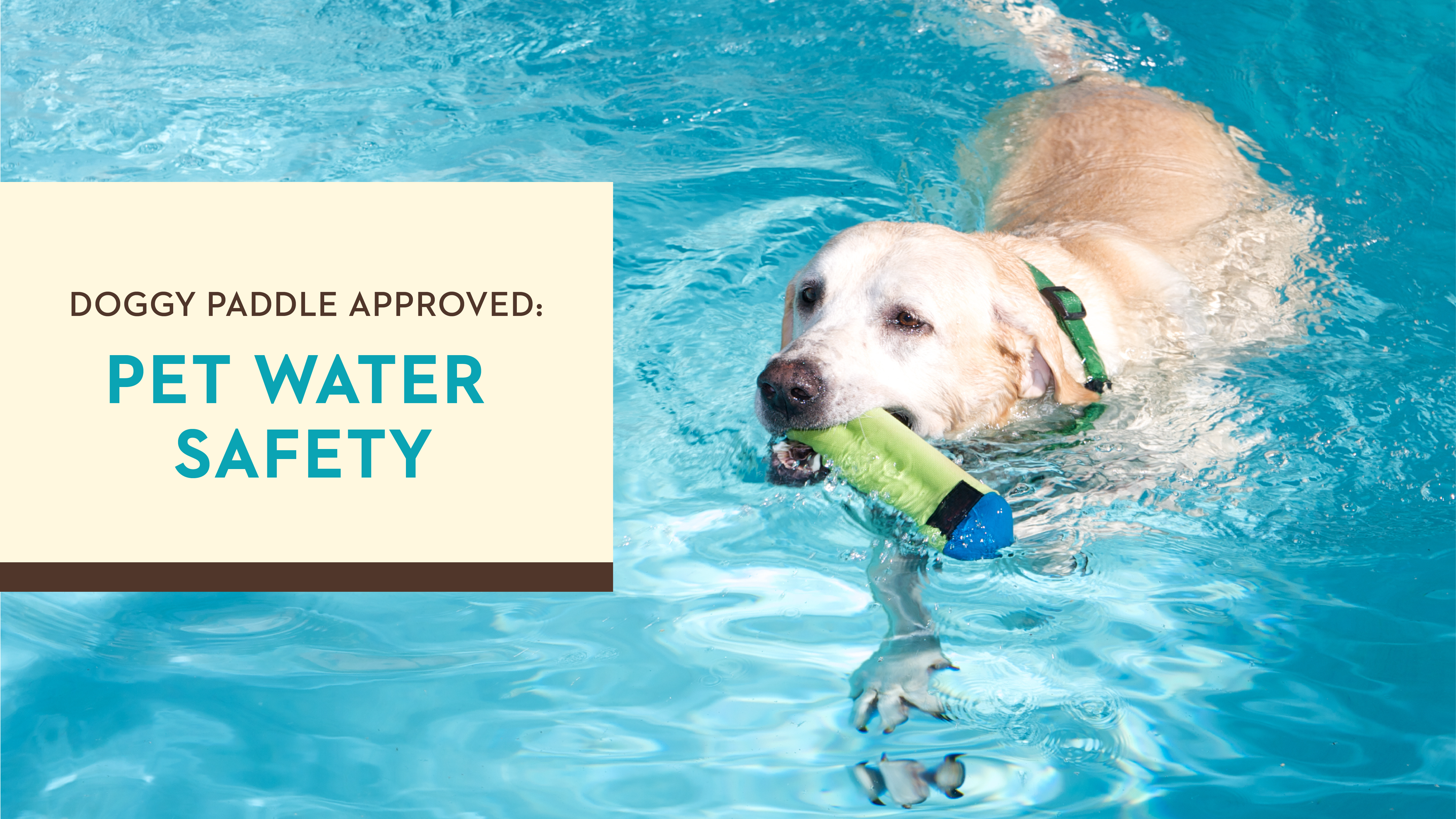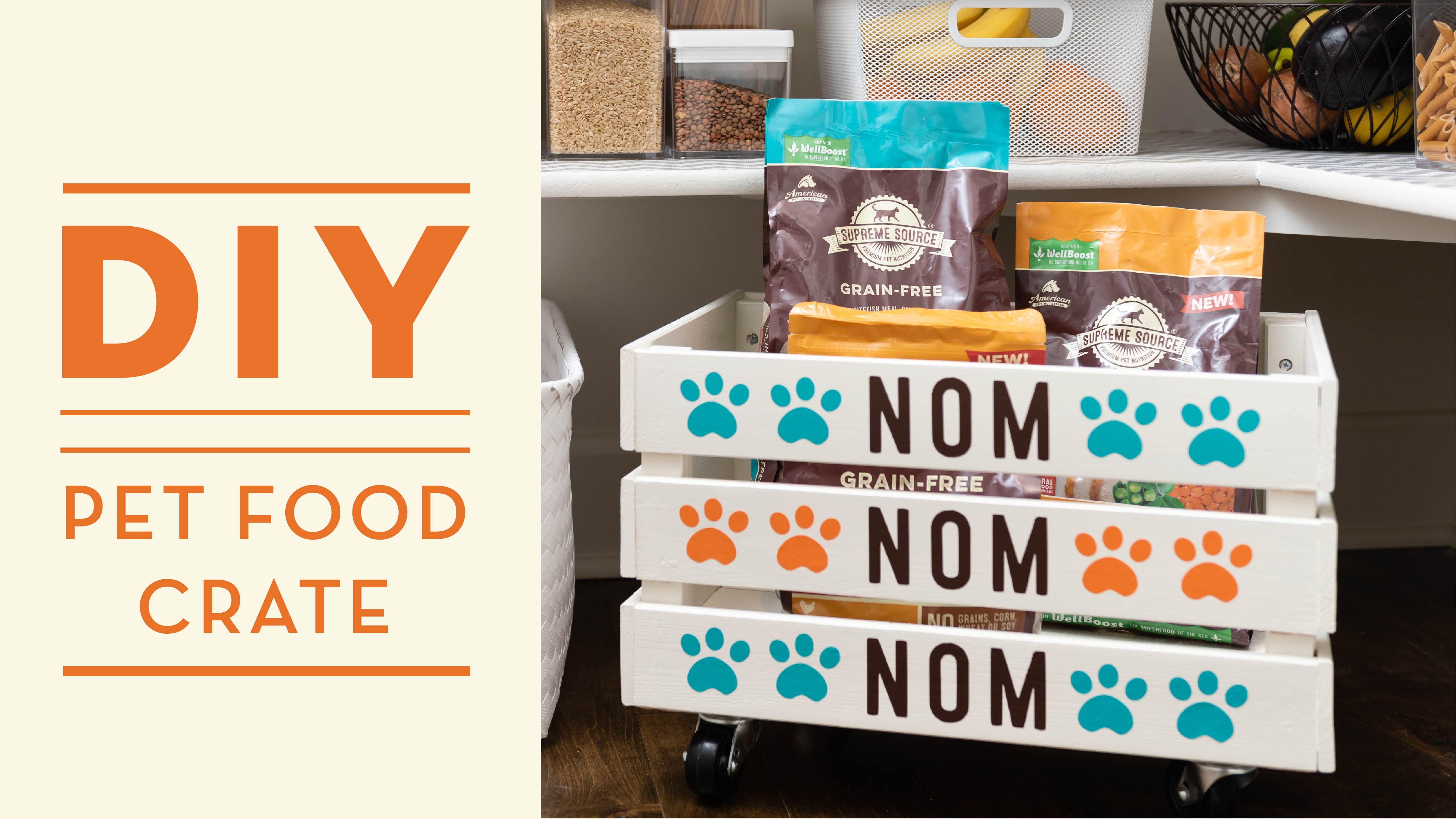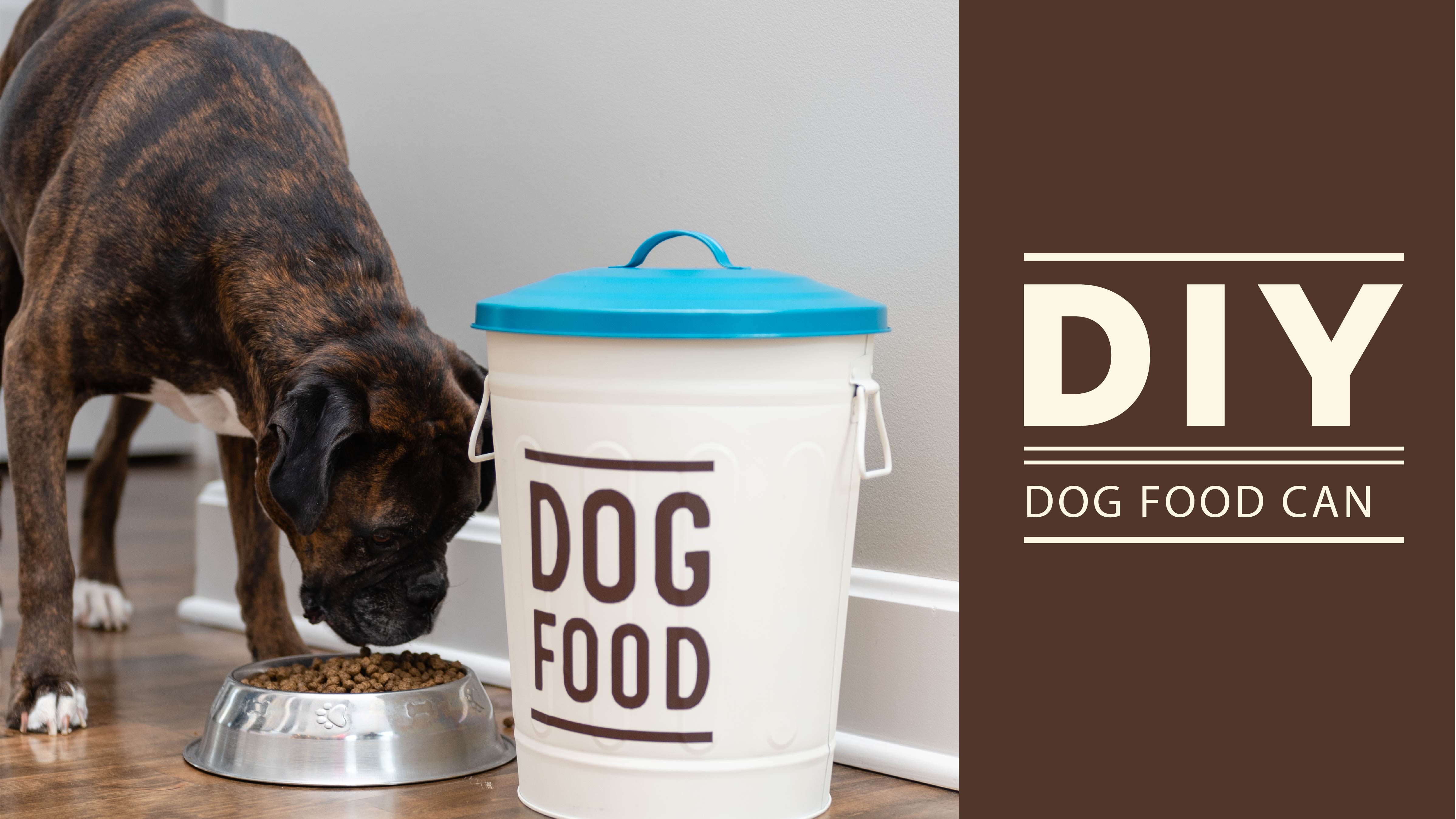Storm season is beginning in many parts of the United States. Natural disasters such as hurricanes, tornadoes, earthquakes and wildfires cannot be completely avoided, which is why it is important to be prepared. While you might have a plan for yourself and your family, have you considered how you can prepare your pet? We cannot predict or prevent these devastating events, but these tips below can help you maximize your pets’ safety. Check out this article and the steps below to make your own Pet Preparedness Emergency Kit.
Pet Preparedness Emergency Kit
Pet identification is crucial in the event of an emergency. Make sure your dog has a collar with a tag and a phone number, and make sure he or she is microchipped. This goes for cats, too – both outdoor and indoor cats – as indoor cats may escape in scary situations. In addition to identification, having a disaster preparedness kit on hand is extremely important. You can buy these items or make your own. Here’s what you need:
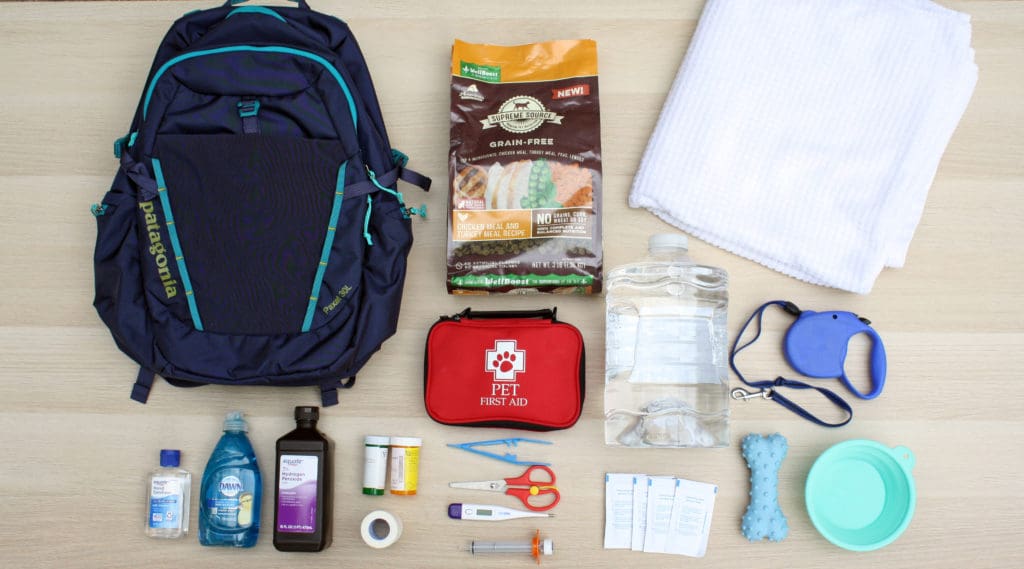
- Duffle bag or backpack
- We recommend one that’s brightly colored so it’s easy to locate.
- Food and water (2-Week Supply)
- Depending on how many pets you have, and their size, this may not be feasible. At the very least, you should have enough to last several days. Supreme Source Pet Food is a great way to ensure your pet is getting all the nutrients it needs in the event of an emergency.
- Collapsible bowls for food and water
- Pet medication (2-Week Supply)
- This includes medication for fleas and ticks, heartworm, etc.
- Pet First Aid Kit that includes
- Thermometer
- Small dish soap – This is great for removing grease and other harmful chemicals from your pet’s fur.
- Eyedropper or Syringe – This is good for flushing wounds or administering vet-recommended medications.
- Hydrogen Peroxide – Just like in humans, peroxide can clean out wounds in pets.
- Popsicle Sticks and T Shirt/Towel scraps – These can be used to create splints for broken paws or tails.
- Hand Sanitizer
- Leash and/or carrier
- Toys, treats, and blankets
- These will help with calming your pets and getting their attention if they’re hiding.
- Pocket folder with up-to-date information:
- Vaccination history
- Medical documents
- Veterinarian phone number
- Emergency contact information
- Printed photo of you with your pet
